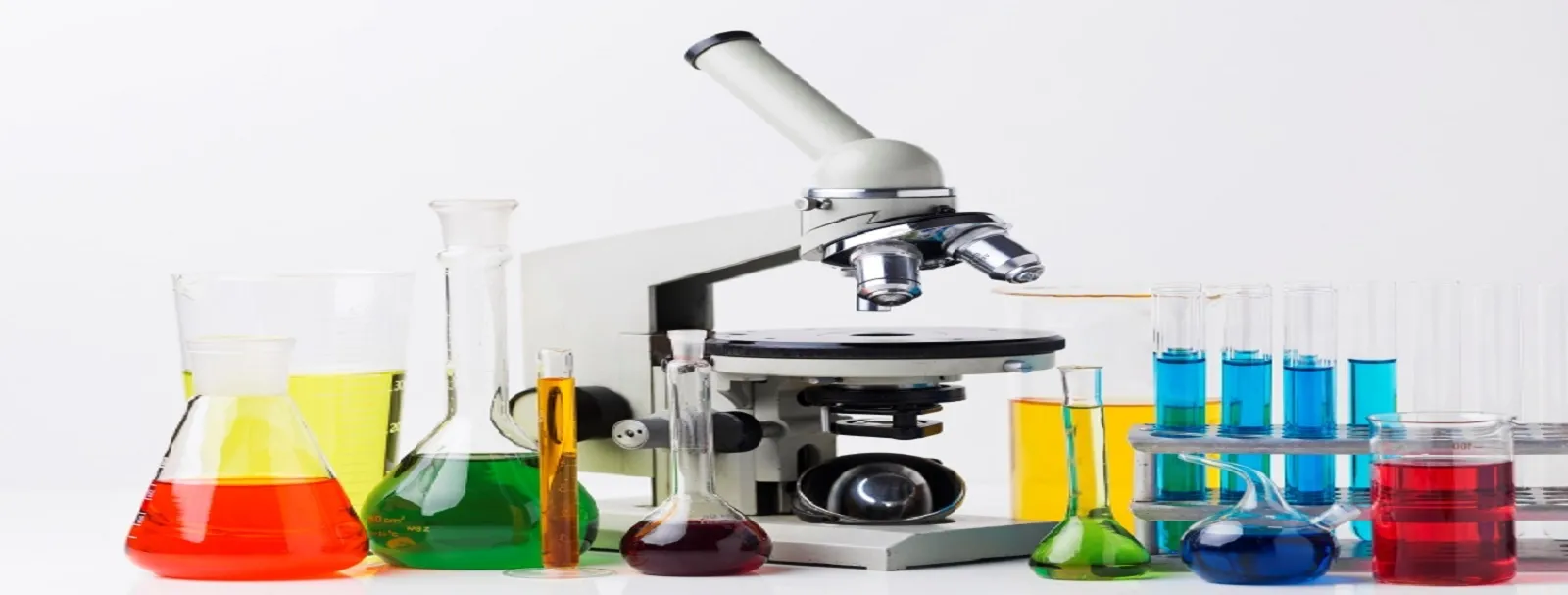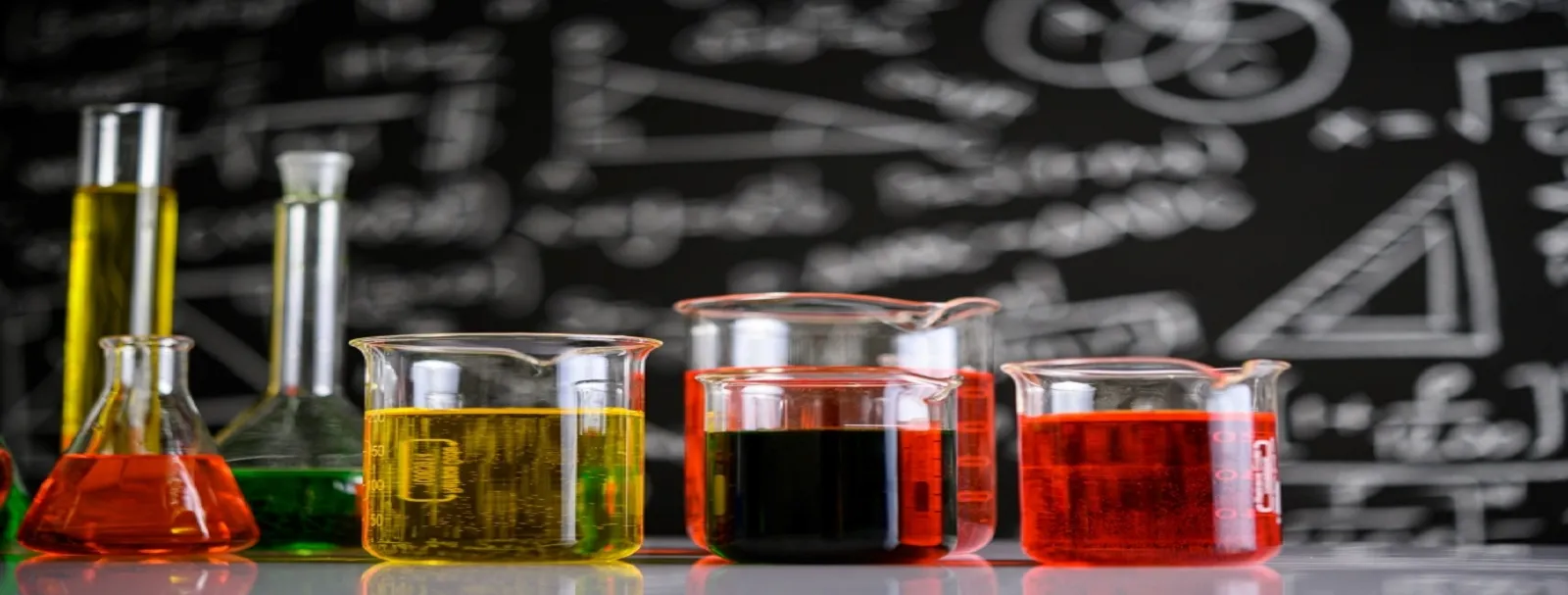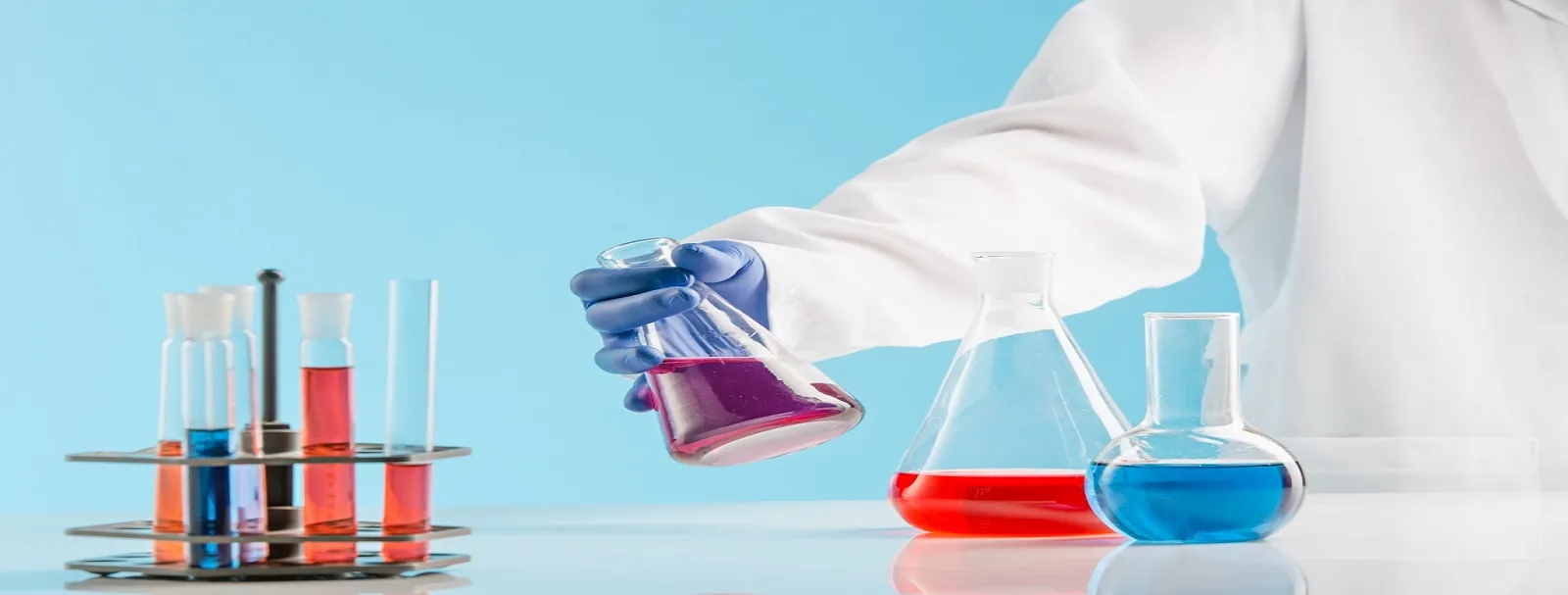Market Outlook
The global Polyimide (PI) Market size was valued at USD 9070.7 million in 2022 and is forecast to a readjusted size of USD 14120 million by 2029 with a CAGR of 6.5% during review period.
Introduction: Why the Polyimide (PI) Market Matters in 2025
Polyimides (PIs) are high-performance polymers known for their exceptional thermal stability, mechanical strength, and chemical resistance. In 2025, they play a critical role in electronics, aerospace, automotive, and flexible displays. As industries push for miniaturization, high heat resistance, and lightweight materials, the PI market is expanding rapidly - especially with rising demand for flexible circuits, 5G components, and electric vehicle technologies.
Market Drivers: What's Fueling the Polyimide (PI) Market Boom?
Flexible Electronics Revolution: The growth of foldable smartphones, wearables, and OLED displays requires high-temperature-resistant and flexible substrates - an area where polyimides excel.
Electric Vehicles and Batteries: PIs are used in insulation films, battery separators, and motor windings, helping EV systems operate safely under extreme conditions.
Aerospace and Defense Demand: The aerospace industry relies on polyimides for lightweight, flame-retardant components that withstand high altitude and temperature fluctuations.
Innovation in Focus: How Manufacturers Are Raising the Bar
Transparent and Flexible PIs: New grades of colorless, optically clear polyimides are enabling innovation in transparent displays and solar cells.
3D Printing and Additive Manufacturing: PI-based filaments are being developed for high-performance 3D printing in prototyping and small-batch aerospace parts.
Sustainable PI Production: Manufacturers are working on greener synthesis processes and recyclable formulations to meet growing environmental standards.
Regional Breakdown: Where the Market is Growing Fastest
Asia-Pacific: Dominates the global market due to a robust electronics manufacturing base in China, South Korea, Japan, and Taiwan. Investment in semiconductor fabs further boosts demand.
North America: The U.S. is a major consumer of PI films for aerospace, defense, and next-gen automotive technologies.
Europe: Strong focus on clean energy and lightweight transport solutions is driving adoption of PIs in electric mobility and aviation.
Strategic Considerations: How to Succeed in the Polyimide (PI) Market 2025
Invest in Flexible Display Solutions: High-quality, transparent PI substrates for foldable and rollable screens represent a rapidly growing niche.
Target Battery and EV Supply Chains: Partner with battery manufacturers and EV OEMs to provide polyimide films tailored for thermal insulation and durability.
Comply with Aerospace Standards: Certifications for flame retardancy, chemical resistance, and low outgassing are essential for penetration into defense and space-grade applications.
Conclusion: The Polyimide (PI) Market 2025 - Resilience Under Extreme Conditions
In 2025, polyimides are more relevant than ever, enabling breakthrough innovations across flexible electronics, aerospace, and electric mobility. With their unmatched combination of heat resistance, mechanical integrity, and chemical stability, PIs offer a robust growth avenue for manufacturers focusing on high-performance polymers.
Key Market Players
- DuPont
- SABIC
- Ube Industries
- Kaneka Corporation
- Taimide Technology
- PI Advanced Materials
- Mitsui Chemicals
- Mitsubishi Gas Chemical
- Asahi Kasei
- Saint-Gobain
- HiPolyking
- Honghu Shuangma
- Changzhou Sunchem
- Huaqiang Insulating Materials
- Qinyang Tianyi Chemical
- Jiangsu Yabao
- Shanghai Qianfeng
Segmentation By Type
- PI Profile
- PI Film
- PI Resin
- PI Coating
- Others
Segmentation By Application
- Electrical Industry
- Aerospace Industry
- Automotive Industry
- Medical Industry
- Others
Segmentation By Region
- North America (United States, Canada and Mexico)
- Europe (Germany, France, United Kingdom, Russia, Italy, and Rest of Europe)
- Asia-Pacific (China, Japan, Korea, India, Southeast Asia, and Australia)
- South America (Brazil, Argentina, Colombia, and Rest of South America)
- Middle East & Africa (Saudi Arabia, UAE, Egypt, South Africa, and Rest of Middle East & Africa)
Market SWOT Analysis
What are the strengths of the Polyimide (PI) Market in 2025?
Polyimide offers exceptional thermal stability, chemical resistance, and mechanical strength, making it ideal for aerospace, electronics, and automotive applications. Its lightweight properties enhance energy efficiency.
What are the weaknesses of the Polyimide (PI) Market in 2025?
High production costs and complex processing requirements limit widespread adoption. Limited recyclability may pose environmental concerns.
What are the opportunities for the Polyimide (PI) Market in 2025?
Expanding applications in flexible electronics, 5G devices, and high-performance insulation boost market demand. Innovations in bio-based polyimides could enhance sustainability.
What are the threats to the Polyimide (PI) Market in 2025?
Competition from advanced thermoplastics and composite materials may impact market growth. Supply chain disruptions in specialty chemicals could affect production stability.
Market PESTEL Analysis
How do political factors impact the Polyimide (PI) Market in 2025?
Political factors such as government investment in space exploration, defense industries, and electronics technology will influence the demand for polyimide (PI) materials. Policies around trade agreements and regulations regarding advanced materials production and import/export will also play a key role. National security concerns and defense spending will particularly impact the market for high-performance polyimides used in aerospace and military applications.
What economic factors affect the Polyimide (PI) Market in 2025?
Economic factors such as the growth of the electronics, automotive, and aerospace sectors will drive the demand for polyimide (PI). Increased industrial production, particularly in high-tech industries, will fuel the need for polyimide’s properties, such as thermal stability and electrical insulation. Additionally, the cost of raw materials and economic fluctuations in manufacturing will influence production costs and the overall pricing structure in the PI market.
How do social factors shape the Polyimide (PI) Market in 2025?
Social factors, such as the growing trend toward more sustainable and energy-efficient technologies, will drive the demand for polyimides, especially in electronics and automotive applications. Consumers' preference for high-performance, lightweight, and durable materials in their electronic devices and vehicles will encourage the use of polyimide in these sectors. Furthermore, societal awareness of environmental sustainability will prompt the adoption of eco-friendly polyimide materials and production processes.
What technological factors are relevant to the Polyimide (PI) Market in 2025?
Technological innovations in material science, such as advancements in polyimide synthesis and processing, will open new opportunities for polyimide applications. The development of more cost-effective production methods for polyimide films and coatings will expand its use in various industries. Additionally, the growing demand for flexible and high-performance electronics will further drive technological advancements in polyimide-based materials for wearables, displays, and other devices.
What environmental factors influence the Polyimide (PI) Market in 2025?
Environmental concerns, particularly around the lifecycle of materials and their disposal, will impact the polyimide market. The increasing need for materials that are recyclable, have minimal environmental impact, and meet sustainability goals will influence the demand for polyimide products. Moreover, industries like electronics and automotive, which utilize polyimide, will continue to prioritize energy efficiency and eco-friendly alternatives in their manufacturing processes.
How do legal factors impact the Polyimide (PI) Market in 2025?
Legal factors, such as intellectual property laws protecting polyimide formulations and production technologies, will influence the competitive landscape of the market. Additionally, compliance with environmental laws governing the use of certain chemicals in production will affect polyimide manufacturers. Stringent regulations concerning the materials' safety and quality in aerospace and medical applications will also impact the development and market entry of new polyimide products.
Market SIPOC Analysis
Who are the suppliers in the Polyimide (PI) Market in 2025?
Suppliers include manufacturers of polyimide resins, monomers, and polymers. Companies specializing in polyimide film production, as well as raw material suppliers such as aromatic diamines and dianhydrides, also contribute to the supply chain. Additionally, specialty coating providers and those involved in the production of polyimide-based products are key suppliers.
What are the inputs in the Polyimide (PI) Market in 2025?
Inputs include aromatic diamines, dianhydrides, and polyimide precursors used in polymerization. Equipment for processing polyimide resins into films or coatings, along with research and development efforts for advanced applications, are also important. Packaging materials and distribution services are additional critical inputs.
What processes are involved in the Polyimide (PI) Market in 2025?
The processes include the polymerization of polyimide resins, followed by the formation of films, coatings, and other materials used in electronic, automotive, and aerospace applications. Post-processing such as curing and heat treatment to enhance polyimide’s performance properties, followed by testing, packaging, and distribution, are crucial stages in the market.
Who are the customers in the Polyimide (PI) Market in 2025?
Customers include industries requiring high-performance materials for demanding applications, such as electronics (flexible circuits, semiconductors), aerospace (insulation), and automotive (lightweight and heat-resistant parts). Polyimide films and coatings are also used in high-temperature industrial environments and for electrical insulation.
What are the outcomes in the Polyimide (PI) Market in 2025?
Outcomes include the widespread adoption of polyimide materials in industries that demand superior thermal stability, mechanical strength, and electrical insulation. The market is likely to grow as industries like electronics, aerospace, and automotive increasingly require durable materials for advanced applications.
Market Porter's Five Forces
What is the threat of new entrants in the Polyimide (PI) Market 2025?
The threat of new entrants is low. The polyimide market requires advanced technology, significant capital investment, and technical expertise. Additionally, established brands with strong customer loyalty and patent protections make entry difficult for newcomers.
What is the bargaining power of suppliers in the Polyimide (PI) Market 2025?
The bargaining power of suppliers is moderate. Although polyimide production relies on specialized chemicals and raw materials, the increasing number of suppliers and advancements in material technologies provide some balance to supplier power.
What is the bargaining power of buyers in the Polyimide (PI) Market 2025?
The bargaining power of buyers is moderate. Buyers in industries such as aerospace, electronics, and automotive have a few key options for sourcing polyimide, but the specialized nature of the product and long-term contracts limit their negotiating leverage.
What is the threat of substitute products in the Polyimide (PI) Market 2025?
The threat of substitutes is low. Polyimides offer unique high-performance properties such as thermal stability, chemical resistance, and electrical insulation that are difficult to replicate with other materials.
What is the intensity of competitive rivalry in the Polyimide (PI) Market 2025?
The intensity of competitive rivalry is moderate. The market is driven by technological advancements and product innovations, with key players vying for market share in specific industries like electronics and aerospace. However, polyimide’s unique characteristics limit the number of direct competitors.
Market Upstream Analysis
What are the key raw materials in the Polyimide (PI) Market in 2025?
The key raw materials in the polyimide (PI) market include aromatic diamines, dianhydrides, and solvents. These raw materials are polymerized to form polyimide resins, which are then processed into films, coatings, and other forms for applications requiring high thermal stability, electrical insulation, and chemical resistance.
What role do suppliers play in the Polyimide (PI) Market in 2025?
Suppliers provide the essential chemicals needed to synthesize polyimides, including aromatic diamines and dianhydrides. They must ensure a stable and high-quality supply of these materials to meet the demand for polyimide products used in industries such as aerospace, electronics, and automotive. Suppliers also play a key role in developing new polyimide formulations with improved properties, such as increased temperature resistance or flexibility.
How does the regulatory environment affect upstream factors in this market?
Regulations regarding the environmental impact and safety of chemicals used in polyimide production influence upstream activities. Suppliers must comply with health, safety, and environmental standards for handling and transporting the chemicals involved. Furthermore, increasing demand for sustainable production methods may lead to the development of new, more environmentally friendly polyimide processes.
What technological advancements influence upstream production in the Polyimide (PI) Market in 2025?
Technological advancements in polymer chemistry, particularly in the development of more efficient and cost-effective polyimide synthesis methods, are enhancing upstream production. Innovations in processing techniques, such as solution casting and chemical vapor deposition, are improving the quality and performance of polyimide films and coatings. The integration of advanced manufacturing technologies, like 3D printing, may also expand the applications of polyimides in emerging industries.
What challenges do upstream suppliers face in this market?
Upstream suppliers face challenges related to the high cost and specialized nature of raw materials required for polyimide production. The complexity of the polymerization process and maintaining the desired performance characteristics of polyimide products across a wide range of applications can add to the challenges. Additionally, meeting increasing demand for sustainable and environmentally friendly manufacturing methods presents further hurdles for suppliers in this market.
Market Midstream Analysis
What are the key processes involved in the midstream of the Polyimide (PI) Market in 2025?
Key processes include the synthesis, fabrication, and distribution of polyimide materials used in high-temperature and high-performance applications. Manufacturers focus on producing polyimide films, resins, and coatings with excellent thermal, electrical, and mechanical properties for industries like aerospace, electronics, and automotive.
How do manufacturers contribute to the Polyimide (PI) Market in 2025?
Manufacturers contribute by developing polyimide materials that can withstand extreme temperatures and provide high performance in demanding environments. They focus on producing polyimide products with superior thermal stability, electrical insulating properties, and durability.
What is the role of packaging in the midstream of this market?
Packaging ensures that polyimide materials, such as films and coatings, are protected from physical damage and environmental factors that could compromise their performance. Proper packaging helps maintain the integrity of these high-performance materials during transportation and storage.
What challenges do companies face in the midstream of this market?
Challenges include managing the high costs associated with the production of polyimides, ensuring consistency in material properties, and meeting the specific requirements of industries like aerospace and electronics that rely on polyimide for critical applications.
How do distribution channels affect the Polyimide (PI) Market in 2025?
Distribution channels are essential in ensuring polyimide products reach industries that require high-performance materials, such as electronics and aerospace. Efficient logistics ensure the timely availability of polyimide products to manufacturers and engineers.
Market Downstream Analysis
What are the key consumer segments in the Polyimide (PI) Market in 2025?
Key consumer segments in the Polyimide (PI) market include electronics manufacturers, aerospace and automotive industries, and medical device companies. Polyimides are used in these sectors for their high thermal stability, electrical insulating properties, and resistance to wear and corrosion, making them ideal for demanding applications.
How do suppliers and distributors contribute to the Polyimide (PI) Market in 2025?
Suppliers provide high-quality polyimide films, coatings, and resins that meet the rigorous requirements of industries like electronics and aerospace. Distributors ensure these specialized products are readily available to manufacturers, facilitating the use of polyimides in various high-performance applications, from flexible circuit boards to aerospace components.
What role does consumer education play in the downstream market for Polyimide (PI) in 2025?
Consumer education is crucial in raising awareness about the benefits of polyimide materials in critical applications. Educating industries on the advantages of polyimide, such as its high heat resistance and electrical insulating properties, can help drive its adoption in emerging sectors like flexible electronics and high-performance aerospace components.
What challenges do companies face in the downstream market of this industry?
Challenges in the Polyimide (PI) market include the high cost of production, which can hinder widespread adoption, especially in cost-sensitive industries. Moreover, there is increasing competition from alternative materials that offer similar benefits, such as high-performance polymers and composites, making differentiation crucial.
How does consumer feedback influence the Polyimide (PI) Market in 2025?
Consumer feedback, particularly from industries like electronics and aerospace, drives improvements in polyimide products to meet specific performance requirements. Positive feedback on the material's durability and thermal resistance boosts demand, while any concerns over cost or processing difficulties may lead manufacturers to enhance production methods and material performance.
Chapter 1, to describe Polyimide (PI) product scope, market overview, market estimation caveats and base year.
Chapter 2, to profile the top manufacturers of Polyimide (PI), with price, sales, revenue and global market share of Polyimide (PI) from 2018 to 2023.
Chapter 3, the Polyimide (PI) competitive situation, sales quantity, revenue and global market share of top manufacturers are analyzed emphatically by landscape contrast.
Chapter 4, the Polyimide (PI) breakdown data are shown at the regional level, to show the sales quantity, consumption value and growth by regions, from 2018 to 2029.
Chapter 5 and 6, to segment the sales by Type and application, with sales market share and growth rate by type, application, from 2018 to 2029.
Chapter 7, 8, 9, 10 and 11, to break the sales data at the country level, with sales quantity, consumption value and market share for key countries in the world, from 2017 to 2022.and Polyimide (PI) market forecast, by regions, type and application, with sales and revenue, from 2024 to 2029.
Chapter 12, market dynamics, drivers, restraints, trends, Porters Five Forces analysis, and Influence of COVID-19 and Russia-Ukraine War.
Chapter 13, the key raw materials and key suppliers, and industry chain of Polyimide (PI).
Chapter 14 and 15, to describe Polyimide (PI) sales channel, distributors, customers, research findings and conclusion.
1 Market Overview
1.1 Product Overview and Scope of Polyimide (PI)
1.2 Market Estimation Caveats and Base Year
1.3 Market Analysis by Type
1.3.1 Overview: Global Polyimide (PI) Consumption Value by Type: 2018 Versus 2022 Versus 2029
1.3.2 PI Profile
1.3.3 PI Film
1.3.4 PI Resin
1.3.5 PI Coating
1.3.6 Others
1.4 Market Analysis by Application
1.4.1 Overview: Global Polyimide (PI) Consumption Value by Application: 2018 Versus 2022 Versus 2029
1.4.2 Electrical Industry
1.4.3 Aerospace Industry
1.4.4 Automotive Industry
1.4.5 Medical Industry
1.4.6 Others
1.5 Global Polyimide (PI) Market Size & Forecast
1.5.1 Global Polyimide (PI) Consumption Value (2018 & 2022 & 2029)
1.5.2 Global Polyimide (PI) Sales Quantity (2018-2029)
1.5.3 Global Polyimide (PI) Average Price (2018-2029)
2 Manufacturers Profiles
2.1 DuPont
2.1.1 DuPont Details
2.1.2 DuPont Major Business
2.1.3 DuPont Polyimide (PI) Product and Services
2.1.4 DuPont Polyimide (PI) Sales Quantity, Average Price, Revenue, Gross Margin and Market Share (2018-2023)
2.1.5 DuPont Recent Developments/Updates
2.2 SABIC
2.2.1 SABIC Details
2.2.2 SABIC Major Business
2.2.3 SABIC Polyimide (PI) Product and Services
2.2.4 SABIC Polyimide (PI) Sales Quantity, Average Price, Revenue, Gross Margin and Market Share (2018-2023)
2.2.5 SABIC Recent Developments/Updates
2.3 Ube Industries
2.3.1 Ube Industries Details
2.3.2 Ube Industries Major Business
2.3.3 Ube Industries Polyimide (PI) Product and Services
2.3.4 Ube Industries Polyimide (PI) Sales Quantity, Average Price, Revenue, Gross Margin and Market Share (2018-2023)
2.3.5 Ube Industries Recent Developments/Updates
2.4 Kaneka Corporation
2.4.1 Kaneka Corporation Details
2.4.2 Kaneka Corporation Major Business
2.4.3 Kaneka Corporation Polyimide (PI) Product and Services
2.4.4 Kaneka Corporation Polyimide (PI) Sales Quantity, Average Price, Revenue, Gross Margin and Market Share (2018-2023)
2.4.5 Kaneka Corporation Recent Developments/Updates
2.5 Taimide Technology
2.5.1 Taimide Technology Details
2.5.2 Taimide Technology Major Business
2.5.3 Taimide Technology Polyimide (PI) Product and Services
2.5.4 Taimide Technology Polyimide (PI) Sales Quantity, Average Price, Revenue, Gross Margin and Market Share (2018-2023)
2.5.5 Taimide Technology Recent Developments/Updates
2.6 PI Advanced Materials
2.6.1 PI Advanced Materials Details
2.6.2 PI Advanced Materials Major Business
2.6.3 PI Advanced Materials Polyimide (PI) Product and Services
2.6.4 PI Advanced Materials Polyimide (PI) Sales Quantity, Average Price, Revenue, Gross Margin and Market Share (2018-2023)
2.6.5 PI Advanced Materials Recent Developments/Updates
2.7 Mitsui Chemicals
2.7.1 Mitsui Chemicals Details
2.7.2 Mitsui Chemicals Major Business
2.7.3 Mitsui Chemicals Polyimide (PI) Product and Services
2.7.4 Mitsui Chemicals Polyimide (PI) Sales Quantity, Average Price, Revenue, Gross Margin and Market Share (2018-2023)
2.7.5 Mitsui Chemicals Recent Developments/Updates
2.8 Mitsubishi Gas Chemical
2.8.1 Mitsubishi Gas Chemical Details
2.8.2 Mitsubishi Gas Chemical Major Business
2.8.3 Mitsubishi Gas Chemical Polyimide (PI) Product and Services
2.8.4 Mitsubishi Gas Chemical Polyimide (PI) Sales Quantity, Average Price, Revenue, Gross Margin and Market Share (2018-2023)
2.8.5 Mitsubishi Gas Chemical Recent Developments/Updates
2.9 Asahi Kasei
2.9.1 Asahi Kasei Details
2.9.2 Asahi Kasei Major Business
2.9.3 Asahi Kasei Polyimide (PI) Product and Services
2.9.4 Asahi Kasei Polyimide (PI) Sales Quantity, Average Price, Revenue, Gross Margin and Market Share (2018-2023)
2.9.5 Asahi Kasei Recent Developments/Updates
2.10 Saint-Gobain
2.10.1 Saint-Gobain Details
2.10.2 Saint-Gobain Major Business
2.10.3 Saint-Gobain Polyimide (PI) Product and Services
2.10.4 Saint-Gobain Polyimide (PI) Sales Quantity, Average Price, Revenue, Gross Margin and Market Share (2018-2023)
2.10.5 Saint-Gobain Recent Developments/Updates
2.11 HiPolyking
2.11.1 HiPolyking Details
2.11.2 HiPolyking Major Business
2.11.3 HiPolyking Polyimide (PI) Product and Services
2.11.4 HiPolyking Polyimide (PI) Sales Quantity, Average Price, Revenue, Gross Margin and Market Share (2018-2023)
2.11.5 HiPolyking Recent Developments/Updates
2.12 Honghu Shuangma
2.12.1 Honghu Shuangma Details
2.12.2 Honghu Shuangma Major Business
2.12.3 Honghu Shuangma Polyimide (PI) Product and Services
2.12.4 Honghu Shuangma Polyimide (PI) Sales Quantity, Average Price, Revenue, Gross Margin and Market Share (2018-2023)
2.12.5 Honghu Shuangma Recent Developments/Updates
2.13 Changzhou Sunchem
2.13.1 Changzhou Sunchem Details
2.13.2 Changzhou Sunchem Major Business
2.13.3 Changzhou Sunchem Polyimide (PI) Product and Services
2.13.4 Changzhou Sunchem Polyimide (PI) Sales Quantity, Average Price, Revenue, Gross Margin and Market Share (2018-2023)
2.13.5 Changzhou Sunchem Recent Developments/Updates
2.14 Huaqiang Insulating Materials
2.14.1 Huaqiang Insulating Materials Details
2.14.2 Huaqiang Insulating Materials Major Business
2.14.3 Huaqiang Insulating Materials Polyimide (PI) Product and Services
2.14.4 Huaqiang Insulating Materials Polyimide (PI) Sales Quantity, Average Price, Revenue, Gross Margin and Market Share (2018-2023)
2.14.5 Huaqiang Insulating Materials Recent Developments/Updates
2.15 Qinyang Tianyi Chemical
2.15.1 Qinyang Tianyi Chemical Details
2.15.2 Qinyang Tianyi Chemical Major Business
2.15.3 Qinyang Tianyi Chemical Polyimide (PI) Product and Services
2.15.4 Qinyang Tianyi Chemical Polyimide (PI) Sales Quantity, Average Price, Revenue, Gross Margin and Market Share (2018-2023)
2.15.5 Qinyang Tianyi Chemical Recent Developments/Updates
2.16 Jiangsu Yabao
2.16.1 Jiangsu Yabao Details
2.16.2 Jiangsu Yabao Major Business
2.16.3 Jiangsu Yabao Polyimide (PI) Product and Services
2.16.4 Jiangsu Yabao Polyimide (PI) Sales Quantity, Average Price, Revenue, Gross Margin and Market Share (2018-2023)
2.16.5 Jiangsu Yabao Recent Developments/Updates
2.17 Shanghai Qianfeng
2.17.1 Shanghai Qianfeng Details
2.17.2 Shanghai Qianfeng Major Business
2.17.3 Shanghai Qianfeng Polyimide (PI) Product and Services
2.17.4 Shanghai Qianfeng Polyimide (PI) Sales Quantity, Average Price, Revenue, Gross Margin and Market Share (2018-2023)
2.17.5 Shanghai Qianfeng Recent Developments/Updates
3 Competitive Environment: Polyimide (PI) by Manufacturer
3.1 Global Polyimide (PI) Sales Quantity by Manufacturer (2018-2023)
3.2 Global Polyimide (PI) Revenue by Manufacturer (2018-2023)
3.3 Global Polyimide (PI) Average Price by Manufacturer (2018-2023)
3.4 Market Share Analysis (2022)
3.4.1 Producer Shipments of Polyimide (PI) by Manufacturer Revenue ($MM) and Market Share (%): 2022
3.4.2 Top 3 Polyimide (PI) Manufacturer Market Share in 2022
3.4.2 Top 6 Polyimide (PI) Manufacturer Market Share in 2022
3.5 Polyimide (PI) Market: Overall Company Footprint Analysis
3.5.1 Polyimide (PI) Market: Region Footprint
3.5.2 Polyimide (PI) Market: Company Product Type Footprint
3.5.3 Polyimide (PI) Market: Company Product Application Footprint
3.6 New Market Entrants and Barriers to Market Entry
3.7 Mergers, Acquisition, Agreements, and Collaborations
4 Consumption Analysis by Region
4.1 Global Polyimide (PI) Market Size by Region
4.1.1 Global Polyimide (PI) Sales Quantity by Region (2018-2029)
4.1.2 Global Polyimide (PI) Consumption Value by Region (2018-2029)
4.1.3 Global Polyimide (PI) Average Price by Region (2018-2029)
4.2 North America Polyimide (PI) Consumption Value (2018-2029)
4.3 Europe Polyimide (PI) Consumption Value (2018-2029)
4.4 Asia-Pacific Polyimide (PI) Consumption Value (2018-2029)
4.5 South America Polyimide (PI) Consumption Value (2018-2029)
4.6 Middle East and Africa Polyimide (PI) Consumption Value (2018-2029)
5 Market Segment by Type
5.1 Global Polyimide (PI) Sales Quantity by Type (2018-2029)
5.2 Global Polyimide (PI) Consumption Value by Type (2018-2029)
5.3 Global Polyimide (PI) Average Price by Type (2018-2029)
6 Market Segment by Application
6.1 Global Polyimide (PI) Sales Quantity by Application (2018-2029)
6.2 Global Polyimide (PI) Consumption Value by Application (2018-2029)
6.3 Global Polyimide (PI) Average Price by Application (2018-2029)
7 North America
7.1 North America Polyimide (PI) Sales Quantity by Type (2018-2029)
7.2 North America Polyimide (PI) Sales Quantity by Application (2018-2029)
7.3 North America Polyimide (PI) Market Size by Country
7.3.1 North America Polyimide (PI) Sales Quantity by Country (2018-2029)
7.3.2 North America Polyimide (PI) Consumption Value by Country (2018-2029)
7.3.3 United States Market Size and Forecast (2018-2029)
7.3.4 Canada Market Size and Forecast (2018-2029)
7.3.5 Mexico Market Size and Forecast (2018-2029)
8 Europe
8.1 Europe Polyimide (PI) Sales Quantity by Type (2018-2029)
8.2 Europe Polyimide (PI) Sales Quantity by Application (2018-2029)
8.3 Europe Polyimide (PI) Market Size by Country
8.3.1 Europe Polyimide (PI) Sales Quantity by Country (2018-2029)
8.3.2 Europe Polyimide (PI) Consumption Value by Country (2018-2029)
8.3.3 Germany Market Size and Forecast (2018-2029)
8.3.4 France Market Size and Forecast (2018-2029)
8.3.5 United Kingdom Market Size and Forecast (2018-2029)
8.3.6 Russia Market Size and Forecast (2018-2029)
8.3.7 Italy Market Size and Forecast (2018-2029)
9 Asia-Pacific
9.1 Asia-Pacific Polyimide (PI) Sales Quantity by Type (2018-2029)
9.2 Asia-Pacific Polyimide (PI) Sales Quantity by Application (2018-2029)
9.3 Asia-Pacific Polyimide (PI) Market Size by Region
9.3.1 Asia-Pacific Polyimide (PI) Sales Quantity by Region (2018-2029)
9.3.2 Asia-Pacific Polyimide (PI) Consumption Value by Region (2018-2029)
9.3.3 China Market Size and Forecast (2018-2029)
9.3.4 Japan Market Size and Forecast (2018-2029)
9.3.5 Korea Market Size and Forecast (2018-2029)
9.3.6 India Market Size and Forecast (2018-2029)
9.3.7 Southeast Asia Market Size and Forecast (2018-2029)
9.3.8 Australia Market Size and Forecast (2018-2029)
10 South America
10.1 South America Polyimide (PI) Sales Quantity by Type (2018-2029)
10.2 South America Polyimide (PI) Sales Quantity by Application (2018-2029)
10.3 South America Polyimide (PI) Market Size by Country
10.3.1 South America Polyimide (PI) Sales Quantity by Country (2018-2029)
10.3.2 South America Polyimide (PI) Consumption Value by Country (2018-2029)
10.3.3 Brazil Market Size and Forecast (2018-2029)
10.3.4 Argentina Market Size and Forecast (2018-2029)
11 Middle East & Africa
11.1 Middle East & Africa Polyimide (PI) Sales Quantity by Type (2018-2029)
11.2 Middle East & Africa Polyimide (PI) Sales Quantity by Application (2018-2029)
11.3 Middle East & Africa Polyimide (PI) Market Size by Country
11.3.1 Middle East & Africa Polyimide (PI) Sales Quantity by Country (2018-2029)
11.3.2 Middle East & Africa Polyimide (PI) Consumption Value by Country (2018-2029)
11.3.3 Turkey Market Size and Forecast (2018-2029)
11.3.4 Egypt Market Size and Forecast (2018-2029)
11.3.5 Saudi Arabia Market Size and Forecast (2018-2029)
11.3.6 South Africa Market Size and Forecast (2018-2029)
12 Market Dynamics
12.1 Polyimide (PI) Market Drivers
12.2 Polyimide (PI) Market Restraints
12.3 Polyimide (PI) Trends Analysis
12.4 Porters Five Forces Analysis
12.4.1 Threat of New Entrants
12.4.2 Bargaining Power of Suppliers
12.4.3 Bargaining Power of Buyers
12.4.4 Threat of Substitutes
12.4.5 Competitive Rivalry
12.5 Influence of COVID-19 and Russia-Ukraine War
12.5.1 Influence of COVID-19
12.5.2 Influence of Russia-Ukraine War
13 Raw Material and Industry Chain
13.1 Raw Material of Polyimide (PI) and Key Manufacturers
13.2 Manufacturing Costs Percentage of Polyimide (PI)
13.3 Polyimide (PI) Production Process
13.4 Polyimide (PI) Industrial Chain
14 Shipments by Distribution Channel
14.1 Sales Channel
14.1.1 Direct to End-User
14.1.2 Distributors
14.2 Polyimide (PI) Typical Distributors
14.3 Polyimide (PI) Typical Customers
15 Research Findings and Conclusion
16 Appendix
16.1 Methodology
16.2 Research Process and Data Source
16.3 Disclaimer
List of Tables
Table 1. Global Polyimide (PI) Consumption Value by Type, (USD Million), 2018 & 2022 & 2029
Table 2. Global Polyimide (PI) Consumption Value by Application, (USD Million), 2018 & 2022 & 2029
Table 3. DuPont Basic Information, Manufacturing Base and Competitors
Table 4. DuPont Major Business
Table 5. DuPont Polyimide (PI) Product and Services
Table 6. DuPont Polyimide (PI) Sales Quantity (K MT), Average Price (US$/MT), Revenue (USD Million), Gross Margin and Market Share (2018-2023)
Table 7. DuPont Recent Developments/Updates
Table 8. SABIC Basic Information, Manufacturing Base and Competitors
Table 9. SABIC Major Business
Table 10. SABIC Polyimide (PI) Product and Services
Table 11. SABIC Polyimide (PI) Sales Quantity (K MT), Average Price (US$/MT), Revenue (USD Million), Gross Margin and Market Share (2018-2023)
Table 12. SABIC Recent Developments/Updates
Table 13. Ube Industries Basic Information, Manufacturing Base and Competitors
Table 14. Ube Industries Major Business
Table 15. Ube Industries Polyimide (PI) Product and Services
Table 16. Ube Industries Polyimide (PI) Sales Quantity (K MT), Average Price (US$/MT), Revenue (USD Million), Gross Margin and Market Share (2018-2023)
Table 17. Ube Industries Recent Developments/Updates
Table 18. Kaneka Corporation Basic Information, Manufacturing Base and Competitors
Table 19. Kaneka Corporation Major Business
Table 20. Kaneka Corporation Polyimide (PI) Product and Services
Table 21. Kaneka Corporation Polyimide (PI) Sales Quantity (K MT), Average Price (US$/MT), Revenue (USD Million), Gross Margin and Market Share (2018-2023)
Table 22. Kaneka Corporation Recent Developments/Updates
Table 23. Taimide Technology Basic Information, Manufacturing Base and Competitors
Table 24. Taimide Technology Major Business
Table 25. Taimide Technology Polyimide (PI) Product and Services
Table 26. Taimide Technology Polyimide (PI) Sales Quantity (K MT), Average Price (US$/MT), Revenue (USD Million), Gross Margin and Market Share (2018-2023)
Table 27. Taimide Technology Recent Developments/Updates
Table 28. PI Advanced Materials Basic Information, Manufacturing Base and Competitors
Table 29. PI Advanced Materials Major Business
Table 30. PI Advanced Materials Polyimide (PI) Product and Services
Table 31. PI Advanced Materials Polyimide (PI) Sales Quantity (K MT), Average Price (US$/MT), Revenue (USD Million), Gross Margin and Market Share (2018-2023)
Table 32. PI Advanced Materials Recent Developments/Updates
Table 33. Mitsui Chemicals Basic Information, Manufacturing Base and Competitors
Table 34. Mitsui Chemicals Major Business
Table 35. Mitsui Chemicals Polyimide (PI) Product and Services
Table 36. Mitsui Chemicals Polyimide (PI) Sales Quantity (K MT), Average Price (US$/MT), Revenue (USD Million), Gross Margin and Market Share (2018-2023)
Table 37. Mitsui Chemicals Recent Developments/Updates
Table 38. Mitsubishi Gas Chemical Basic Information, Manufacturing Base and Competitors
Table 39. Mitsubishi Gas Chemical Major Business
Table 40. Mitsubishi Gas Chemical Polyimide (PI) Product and Services
Table 41. Mitsubishi Gas Chemical Polyimide (PI) Sales Quantity (K MT), Average Price (US$/MT), Revenue (USD Million), Gross Margin and Market Share (2018-2023)
Table 42. Mitsubishi Gas Chemical Recent Developments/Updates
Table 43. Asahi Kasei Basic Information, Manufacturing Base and Competitors
Table 44. Asahi Kasei Major Business
Table 45. Asahi Kasei Polyimide (PI) Product and Services
Table 46. Asahi Kasei Polyimide (PI) Sales Quantity (K MT), Average Price (US$/MT), Revenue (USD Million), Gross Margin and Market Share (2018-2023)
Table 47. Asahi Kasei Recent Developments/Updates
Table 48. Saint-Gobain Basic Information, Manufacturing Base and Competitors
Table 49. Saint-Gobain Major Business
Table 50. Saint-Gobain Polyimide (PI) Product and Services
Table 51. Saint-Gobain Polyimide (PI) Sales Quantity (K MT), Average Price (US$/MT), Revenue (USD Million), Gross Margin and Market Share (2018-2023)
Table 52. Saint-Gobain Recent Developments/Updates
Table 53. HiPolyking Basic Information, Manufacturing Base and Competitors
Table 54. HiPolyking Major Business
Table 55. HiPolyking Polyimide (PI) Product and Services
Table 56. HiPolyking Polyimide (PI) Sales Quantity (K MT), Average Price (US$/MT), Revenue (USD Million), Gross Margin and Market Share (2018-2023)
Table 57. HiPolyking Recent Developments/Updates
Table 58. Honghu Shuangma Basic Information, Manufacturing Base and Competitors
Table 59. Honghu Shuangma Major Business
Table 60. Honghu Shuangma Polyimide (PI) Product and Services
Table 61. Honghu Shuangma Polyimide (PI) Sales Quantity (K MT), Average Price (US$/MT), Revenue (USD Million), Gross Margin and Market Share (2018-2023)
Table 62. Honghu Shuangma Recent Developments/Updates
Table 63. Changzhou Sunchem Basic Information, Manufacturing Base and Competitors
Table 64. Changzhou Sunchem Major Business
Table 65. Changzhou Sunchem Polyimide (PI) Product and Services
Table 66. Changzhou Sunchem Polyimide (PI) Sales Quantity (K MT), Average Price (US$/MT), Revenue (USD Million), Gross Margin and Market Share (2018-2023)
Table 67. Changzhou Sunchem Recent Developments/Updates
Table 68. Huaqiang Insulating Materials Basic Information, Manufacturing Base and Competitors
Table 69. Huaqiang Insulating Materials Major Business
Table 70. Huaqiang Insulating Materials Polyimide (PI) Product and Services
Table 71. Huaqiang Insulating Materials Polyimide (PI) Sales Quantity (K MT), Average Price (US$/MT), Revenue (USD Million), Gross Margin and Market Share (2018-2023)
Table 72. Huaqiang Insulating Materials Recent Developments/Updates
Table 73. Qinyang Tianyi Chemical Basic Information, Manufacturing Base and Competitors
Table 74. Qinyang Tianyi Chemical Major Business
Table 75. Qinyang Tianyi Chemical Polyimide (PI) Product and Services
Table 76. Qinyang Tianyi Chemical Polyimide (PI) Sales Quantity (K MT), Average Price (US$/MT), Revenue (USD Million), Gross Margin and Market Share (2018-2023)
Table 77. Qinyang Tianyi Chemical Recent Developments/Updates
Table 78. Jiangsu Yabao Basic Information, Manufacturing Base and Competitors
Table 79. Jiangsu Yabao Major Business
Table 80. Jiangsu Yabao Polyimide (PI) Product and Services
Table 81. Jiangsu Yabao Polyimide (PI) Sales Quantity (K MT), Average Price (US$/MT), Revenue (USD Million), Gross Margin and Market Share (2018-2023)
Table 82. Jiangsu Yabao Recent Developments/Updates
Table 83. Shanghai Qianfeng Basic Information, Manufacturing Base and Competitors
Table 84. Shanghai Qianfeng Major Business
Table 85. Shanghai Qianfeng Polyimide (PI) Product and Services
Table 86. Shanghai Qianfeng Polyimide (PI) Sales Quantity (K MT), Average Price (US$/MT), Revenue (USD Million), Gross Margin and Market Share (2018-2023)
Table 87. Shanghai Qianfeng Recent Developments/Updates
Table 88. Global Polyimide (PI) Sales Quantity by Manufacturer (2018-2023) & (K MT)
Table 89. Global Polyimide (PI) Revenue by Manufacturer (2018-2023) & (USD Million)
Table 90. Global Polyimide (PI) Average Price by Manufacturer (2018-2023) & (US$/MT)
Table 91. Market Position of Manufacturers in Polyimide (PI), (Tier 1, Tier 2, and Tier 3), Based on Consumption Value in 2022
Table 92. Head Office and Polyimide (PI) Production Site of Key Manufacturer
Table 93. Polyimide (PI) Market: Company Product Type Footprint
Table 94. Polyimide (PI) Market: Company Product Application Footprint
Table 95. Polyimide (PI) New Market Entrants and Barriers to Market Entry
Table 96. Polyimide (PI) Mergers, Acquisition, Agreements, and Collaborations
Table 97. Global Polyimide (PI) Sales Quantity by Region (2018-2023) & (K MT)
Table 98. Global Polyimide (PI) Sales Quantity by Region (2024-2029) & (K MT)
Table 99. Global Polyimide (PI) Consumption Value by Region (2018-2023) & (USD Million)
Table 100. Global Polyimide (PI) Consumption Value by Region (2024-2029) & (USD Million)
Table 101. Global Polyimide (PI) Average Price by Region (2018-2023) & (US$/MT)
Table 102. Global Polyimide (PI) Average Price by Region (2024-2029) & (US$/MT)
Table 103. Global Polyimide (PI) Sales Quantity by Type (2018-2023) & (K MT)
Table 104. Global Polyimide (PI) Sales Quantity by Type (2024-2029) & (K MT)
Table 105. Global Polyimide (PI) Consumption Value by Type (2018-2023) & (USD Million)
Table 106. Global Polyimide (PI) Consumption Value by Type (2024-2029) & (USD Million)
Table 107. Global Polyimide (PI) Average Price by Type (2018-2023) & (US$/MT)
Table 108. Global Polyimide (PI) Average Price by Type (2024-2029) & (US$/MT)
Table 109. Global Polyimide (PI) Sales Quantity by Application (2018-2023) & (K MT)
Table 110. Global Polyimide (PI) Sales Quantity by Application (2024-2029) & (K MT)
Table 111. Global Polyimide (PI) Consumption Value by Application (2018-2023) & (USD Million)
Table 112. Global Polyimide (PI) Consumption Value by Application (2024-2029) & (USD Million)
Table 113. Global Polyimide (PI) Average Price by Application (2018-2023) & (US$/MT)
Table 114. Global Polyimide (PI) Average Price by Application (2024-2029) & (US$/MT)
Table 115. North America Polyimide (PI) Sales Quantity by Type (2018-2023) & (K MT)
Table 116. North America Polyimide (PI) Sales Quantity by Type (2024-2029) & (K MT)
Table 117. North America Polyimide (PI) Sales Quantity by Application (2018-2023) & (K MT)
Table 118. North America Polyimide (PI) Sales Quantity by Application (2024-2029) & (K MT)
Table 119. North America Polyimide (PI) Sales Quantity by Country (2018-2023) & (K MT)
Table 120. North America Polyimide (PI) Sales Quantity by Country (2024-2029) & (K MT)
Table 121. North America Polyimide (PI) Consumption Value by Country (2018-2023) & (USD Million)
Table 122. North America Polyimide (PI) Consumption Value by Country (2024-2029) & (USD Million)
Table 123. Europe Polyimide (PI) Sales Quantity by Type (2018-2023) & (K MT)
Table 124. Europe Polyimide (PI) Sales Quantity by Type (2024-2029) & (K MT)
Table 125. Europe Polyimide (PI) Sales Quantity by Application (2018-2023) & (K MT)
Table 126. Europe Polyimide (PI) Sales Quantity by Application (2024-2029) & (K MT)
Table 127. Europe Polyimide (PI) Sales Quantity by Country (2018-2023) & (K MT)
Table 128. Europe Polyimide (PI) Sales Quantity by Country (2024-2029) & (K MT)
Table 129. Europe Polyimide (PI) Consumption Value by Country (2018-2023) & (USD Million)
Table 130. Europe Polyimide (PI) Consumption Value by Country (2024-2029) & (USD Million)
Table 131. Asia-Pacific Polyimide (PI) Sales Quantity by Type (2018-2023) & (K MT)
Table 132. Asia-Pacific Polyimide (PI) Sales Quantity by Type (2024-2029) & (K MT)
Table 133. Asia-Pacific Polyimide (PI) Sales Quantity by Application (2018-2023) & (K MT)
Table 134. Asia-Pacific Polyimide (PI) Sales Quantity by Application (2024-2029) & (K MT)
Table 135. Asia-Pacific Polyimide (PI) Sales Quantity by Region (2018-2023) & (K MT)
Table 136. Asia-Pacific Polyimide (PI) Sales Quantity by Region (2024-2029) & (K MT)
Table 137. Asia-Pacific Polyimide (PI) Consumption Value by Region (2018-2023) & (USD Million)
Table 138. Asia-Pacific Polyimide (PI) Consumption Value by Region (2024-2029) & (USD Million)
Table 139. South America Polyimide (PI) Sales Quantity by Type (2018-2023) & (K MT)
Table 140. South America Polyimide (PI) Sales Quantity by Type (2024-2029) & (K MT)
Table 141. South America Polyimide (PI) Sales Quantity by Application (2018-2023) & (K MT)
Table 142. South America Polyimide (PI) Sales Quantity by Application (2024-2029) & (K MT)
Table 143. South America Polyimide (PI) Sales Quantity by Country (2018-2023) & (K MT)
Table 144. South America Polyimide (PI) Sales Quantity by Country (2024-2029) & (K MT)
Table 145. South America Polyimide (PI) Consumption Value by Country (2018-2023) & (USD Million)
Table 146. South America Polyimide (PI) Consumption Value by Country (2024-2029) & (USD Million)
Table 147. Middle East & Africa Polyimide (PI) Sales Quantity by Type (2018-2023) & (K MT)
Table 148. Middle East & Africa Polyimide (PI) Sales Quantity by Type (2024-2029) & (K MT)
Table 149. Middle East & Africa Polyimide (PI) Sales Quantity by Application (2018-2023) & (K MT)
Table 150. Middle East & Africa Polyimide (PI) Sales Quantity by Application (2024-2029) & (K MT)
Table 151. Middle East & Africa Polyimide (PI) Sales Quantity by Region (2018-2023) & (K MT)
Table 152. Middle East & Africa Polyimide (PI) Sales Quantity by Region (2024-2029) & (K MT)
Table 153. Middle East & Africa Polyimide (PI) Consumption Value by Region (2018-2023) & (USD Million)
Table 154. Middle East & Africa Polyimide (PI) Consumption Value by Region (2024-2029) & (USD Million)
Table 155. Polyimide (PI) Raw Material
Table 156. Key Manufacturers of Polyimide (PI) Raw Materials
Table 157. Polyimide (PI) Typical Distributors
Table 158. Polyimide (PI) Typical Customers
List of Figures
Figure 1. Polyimide (PI) Picture
Figure 2. Global Polyimide (PI) Consumption Value by Type, (USD Million), 2018 & 2022 & 2029
Figure 3. Global Polyimide (PI) Consumption Value Market Share by Type in 2022
Figure 4. PI Profile Examples
Figure 5. PI Film Examples
Figure 6. PI Resin Examples
Figure 7. PI Coating Examples
Figure 8. Others Examples
Figure 9. Global Polyimide (PI) Consumption Value by Application, (USD Million), 2018 & 2022 & 2029
Figure 10. Global Polyimide (PI) Consumption Value Market Share by Application in 2022
Figure 11. Electrical Industry Examples
Figure 12. Aerospace Industry Examples
Figure 13. Automotive Industry Examples
Figure 14. Medical Industry Examples
Figure 15. Others Examples
Figure 16. Global Polyimide (PI) Consumption Value, (USD Million): 2018 & 2022 & 2029
Figure 17. Global Polyimide (PI) Consumption Value and Forecast (2018-2029) & (USD Million)
Figure 18. Global Polyimide (PI) Sales Quantity (2018-2029) & (K MT)
Figure 19. Global Polyimide (PI) Average Price (2018-2029) & (US$/MT)
Figure 20. Global Polyimide (PI) Sales Quantity Market Share by Manufacturer in 2022
Figure 21. Global Polyimide (PI) Consumption Value Market Share by Manufacturer in 2022
Figure 22. Producer Shipments of Polyimide (PI) by Manufacturer Sales Quantity ($MM) and Market Share (%): 2021
Figure 23. Top 3 Polyimide (PI) Manufacturer (Consumption Value) Market Share in 2022
Figure 24. Top 6 Polyimide (PI) Manufacturer (Consumption Value) Market Share in 2022
Figure 25. Global Polyimide (PI) Sales Quantity Market Share by Region (2018-2029)
Figure 26. Global Polyimide (PI) Consumption Value Market Share by Region (2018-2029)
Figure 27. North America Polyimide (PI) Consumption Value (2018-2029) & (USD Million)
Figure 28. Europe Polyimide (PI) Consumption Value (2018-2029) & (USD Million)
Figure 29. Asia-Pacific Polyimide (PI) Consumption Value (2018-2029) & (USD Million)
Figure 30. South America Polyimide (PI) Consumption Value (2018-2029) & (USD Million)
Figure 31. Middle East & Africa Polyimide (PI) Consumption Value (2018-2029) & (USD Million)
Figure 32. Global Polyimide (PI) Sales Quantity Market Share by Type (2018-2029)
Figure 33. Global Polyimide (PI) Consumption Value Market Share by Type (2018-2029)
Figure 34. Global Polyimide (PI) Average Price by Type (2018-2029) & (US$/MT)
Figure 35. Global Polyimide (PI) Sales Quantity Market Share by Application (2018-2029)
Figure 36. Global Polyimide (PI) Consumption Value Market Share by Application (2018-2029)
Figure 37. Global Polyimide (PI) Average Price by Application (2018-2029) & (US$/MT)
Figure 38. North America Polyimide (PI) Sales Quantity Market Share by Type (2018-2029)
Figure 39. North America Polyimide (PI) Sales Quantity Market Share by Application (2018-2029)
Figure 40. North America Polyimide (PI) Sales Quantity Market Share by Country (2018-2029)
Figure 41. North America Polyimide (PI) Consumption Value Market Share by Country (2018-2029)
Figure 42. United States Polyimide (PI) Consumption Value and Growth Rate (2018-2029) & (USD Million)
Figure 43. Canada Polyimide (PI) Consumption Value and Growth Rate (2018-2029) & (USD Million)
Figure 44. Mexico Polyimide (PI) Consumption Value and Growth Rate (2018-2029) & (USD Million)
Figure 45. Europe Polyimide (PI) Sales Quantity Market Share by Type (2018-2029)
Figure 46. Europe Polyimide (PI) Sales Quantity Market Share by Application (2018-2029)
Figure 47. Europe Polyimide (PI) Sales Quantity Market Share by Country (2018-2029)
Figure 48. Europe Polyimide (PI) Consumption Value Market Share by Country (2018-2029)
Figure 49. Germany Polyimide (PI) Consumption Value and Growth Rate (2018-2029) & (USD Million)
Figure 50. France Polyimide (PI) Consumption Value and Growth Rate (2018-2029) & (USD Million)
Figure 51. United Kingdom Polyimide (PI) Consumption Value and Growth Rate (2018-2029) & (USD Million)
Figure 52. Russia Polyimide (PI) Consumption Value and Growth Rate (2018-2029) & (USD Million)
Figure 53. Italy Polyimide (PI) Consumption Value and Growth Rate (2018-2029) & (USD Million)
Figure 54. Asia-Pacific Polyimide (PI) Sales Quantity Market Share by Type (2018-2029)
Figure 55. Asia-Pacific Polyimide (PI) Sales Quantity Market Share by Application (2018-2029)
Figure 56. Asia-Pacific Polyimide (PI) Sales Quantity Market Share by Region (2018-2029)
Figure 57. Asia-Pacific Polyimide (PI) Consumption Value Market Share by Region (2018-2029)
Figure 58. China Polyimide (PI) Consumption Value and Growth Rate (2018-2029) & (USD Million)
Figure 59. Japan Polyimide (PI) Consumption Value and Growth Rate (2018-2029) & (USD Million)
Figure 60. Korea Polyimide (PI) Consumption Value and Growth Rate (2018-2029) & (USD Million)
Figure 61. India Polyimide (PI) Consumption Value and Growth Rate (2018-2029) & (USD Million)
Figure 62. Southeast Asia Polyimide (PI) Consumption Value and Growth Rate (2018-2029) & (USD Million)
Figure 63. Australia Polyimide (PI) Consumption Value and Growth Rate (2018-2029) & (USD Million)
Figure 64. South America Polyimide (PI) Sales Quantity Market Share by Type (2018-2029)
Figure 65. South America Polyimide (PI) Sales Quantity Market Share by Application (2018-2029)
Figure 66. South America Polyimide (PI) Sales Quantity Market Share by Country (2018-2029)
Figure 67. South America Polyimide (PI) Consumption Value Market Share by Country (2018-2029)
Figure 68. Brazil Polyimide (PI) Consumption Value and Growth Rate (2018-2029) & (USD Million)
Figure 69. Argentina Polyimide (PI) Consumption Value and Growth Rate (2018-2029) & (USD Million)
Figure 70. Middle East & Africa Polyimide (PI) Sales Quantity Market Share by Type (2018-2029)
Figure 71. Middle East & Africa Polyimide (PI) Sales Quantity Market Share by Application (2018-2029)
Figure 72. Middle East & Africa Polyimide (PI) Sales Quantity Market Share by Region (2018-2029)
Figure 73. Middle East & Africa Polyimide (PI) Consumption Value Market Share by Region (2018-2029)
Figure 74. Turkey Polyimide (PI) Consumption Value and Growth Rate (2018-2029) & (USD Million)
Figure 75. Egypt Polyimide (PI) Consumption Value and Growth Rate (2018-2029) & (USD Million)
Figure 76. Saudi Arabia Polyimide (PI) Consumption Value and Growth Rate (2018-2029) & (USD Million)
Figure 77. South Africa Polyimide (PI) Consumption Value and Growth Rate (2018-2029) & (USD Million)
Figure 78. Polyimide (PI) Market Drivers
Figure 79. Polyimide (PI) Market Restraints
Figure 80. Polyimide (PI) Market Trends
Figure 81. Porters Five Forces Analysis
Figure 82. Manufacturing Cost Structure Analysis of Polyimide (PI) in 2022
Figure 83. Manufacturing Process Analysis of Polyimide (PI)
Figure 84. Polyimide (PI) Industrial Chain
Figure 85. Sales Quantity Channel: Direct to End-User vs Distributors
Figure 86. Direct Channel Pros & Cons
Figure 87. Indirect Channel Pros & Cons
Figure 88. Methodology
Figure 89. Research Process and Data Source











